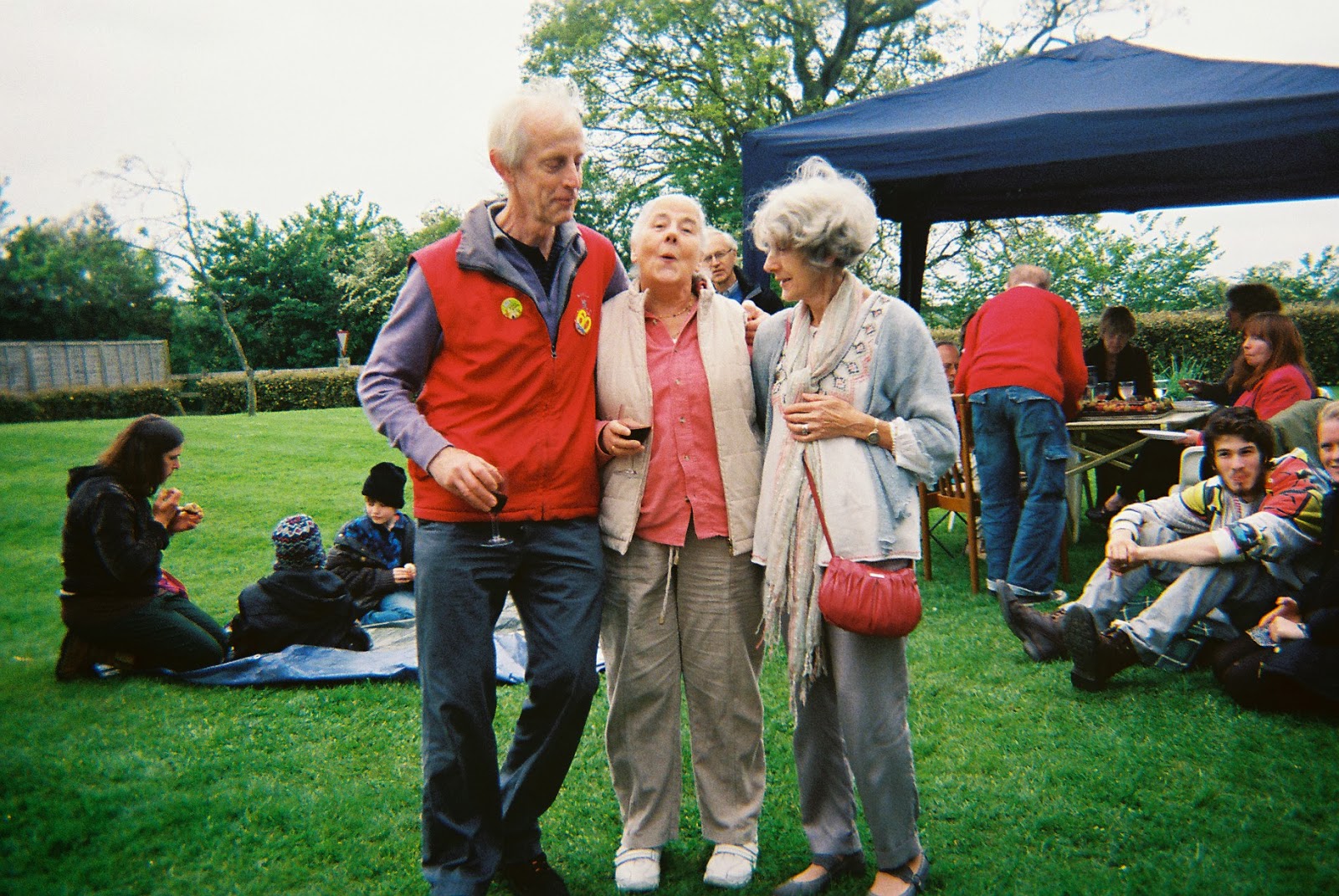The photo by itself (the one on its side) is already melancholy and weird, as it is so faded, and the tight rope between it is like a line between realities. I liked the surreal feel to this, because it takes a photo which might seem normal (a city-scape) and then flips it on it's head in a very subtle and understated way. When I saw the picture first (small), I thought it was a man tight roping between buildings. This could comment on how each building is its own world, as well as how we fail to imagine a parallel universe that is any different to ours; we literally are stuck in this structure. Many of his photographs are the same;
They all have a very simple aesthetic, very based on line and color and using this simplicity to transform the normal to the abnormal. The one above I liked because It leads the eye right back, and has almost a story-book quality to it. It doesn't real. On top of this, the footprints are the wrong way around, suggesting the more surreal nature of the photo. This is very photo-shopped; all this shadows have been taken out, making it feel story book.
I really like this one above, especially because it shows a simple and effective use of photo-shop, which isn't over the top. I also liked how he crossed normal boundaries in quite a subtle and understated fashion. This one I liked especially because he chose a business man (someone who you might not expect to be on a swing, or in a fantasy) to be on the swing. This grounds the reality, as the chains links him and earth, he links this weird fantasy to what we know. I liked this because it turns our ideas upside down literally.
The photographer is from Iran, and is self taught. He likes to "create an ominous atmosphere", and to "defy gravity", which make a sort of apocalyptic feel. This has little to do with my project, but I liked it a lot.
On this note, was going through some old photos, and found some photos my aunt took at my dads birthday party. I'll put them here before explaining why I find them interesting.
I think I liked these because they showed what was important to her. She had only 20 photos, and so she had to make sure that she didn't over-shoot. I took about 700 photos that day, some which look almost identical to these ones. However, it is these ones which I think of as the best ones. This is beacuse of the way they look, i thin. The grainy, gritty, contrast-y image speaks volumes on the photos which define y childhood. These photos are a representation, to me, of history, of before- they suggest someone who actually thought and cared for images and took these ones. This is interesting, and relates to previous readings about how highly we hold analogue photography and the style of analogue photography. i want my project to reflect this; these are disposable images in name, but actually they are interestingly held in high regard. The photos taken by the group can reflect this; that by looking the way they do, and by being finite, this makes each one worthy and count. I was wondering if this project does not work, about maybe giving my cameras to lots of people and seeing what their reactions are to being asked to photograph what is important/themsleves.
I wonder if then showing such photos to the public, if they would get the same feeling that I get from looking at these. I feel that this is an important attitude to photography. It also links into what we decide is "worth" a photograph and what isn't. This is a whole other question; and links especially to what we decide is important and beautiful. My aunt decided it was all our relatives, but I wonder what homeless people, or just random people might think instead. This leads me to new avenues!

























 "
"


 There are several things that draw me to this type of photography> Firstly, the interaction between subject and person; you don;t just look at them, you hear something about their personality, and often these little snippets of something are so profound and honest, they change the photo completely. The project spans all ages and races, from all sides of the city, and this makes it really interesting from an anthropological point of view, as well as just happy that such a mix of people exist together peacefully. What is also positive is that members can interact, they post replies and comments, and these are generally sweet and supportive of the person- Brandon has created one of the nicest places on the internet by giving everyone a voice- from subject to viewer, and this equalizing seems to mean that everyone is lovely to each other.
There are several things that draw me to this type of photography> Firstly, the interaction between subject and person; you don;t just look at them, you hear something about their personality, and often these little snippets of something are so profound and honest, they change the photo completely. The project spans all ages and races, from all sides of the city, and this makes it really interesting from an anthropological point of view, as well as just happy that such a mix of people exist together peacefully. What is also positive is that members can interact, they post replies and comments, and these are generally sweet and supportive of the person- Brandon has created one of the nicest places on the internet by giving everyone a voice- from subject to viewer, and this equalizing seems to mean that everyone is lovely to each other.